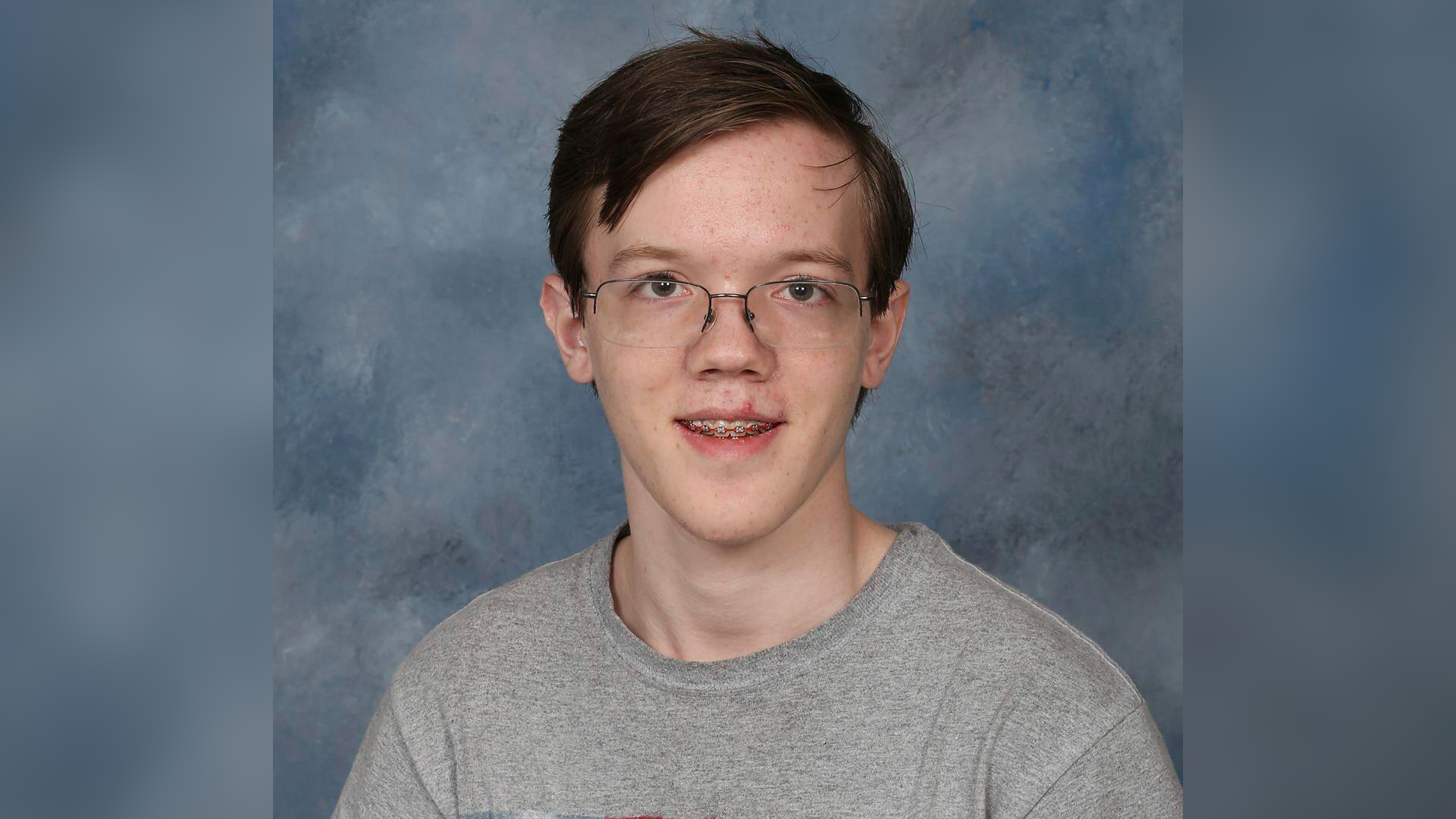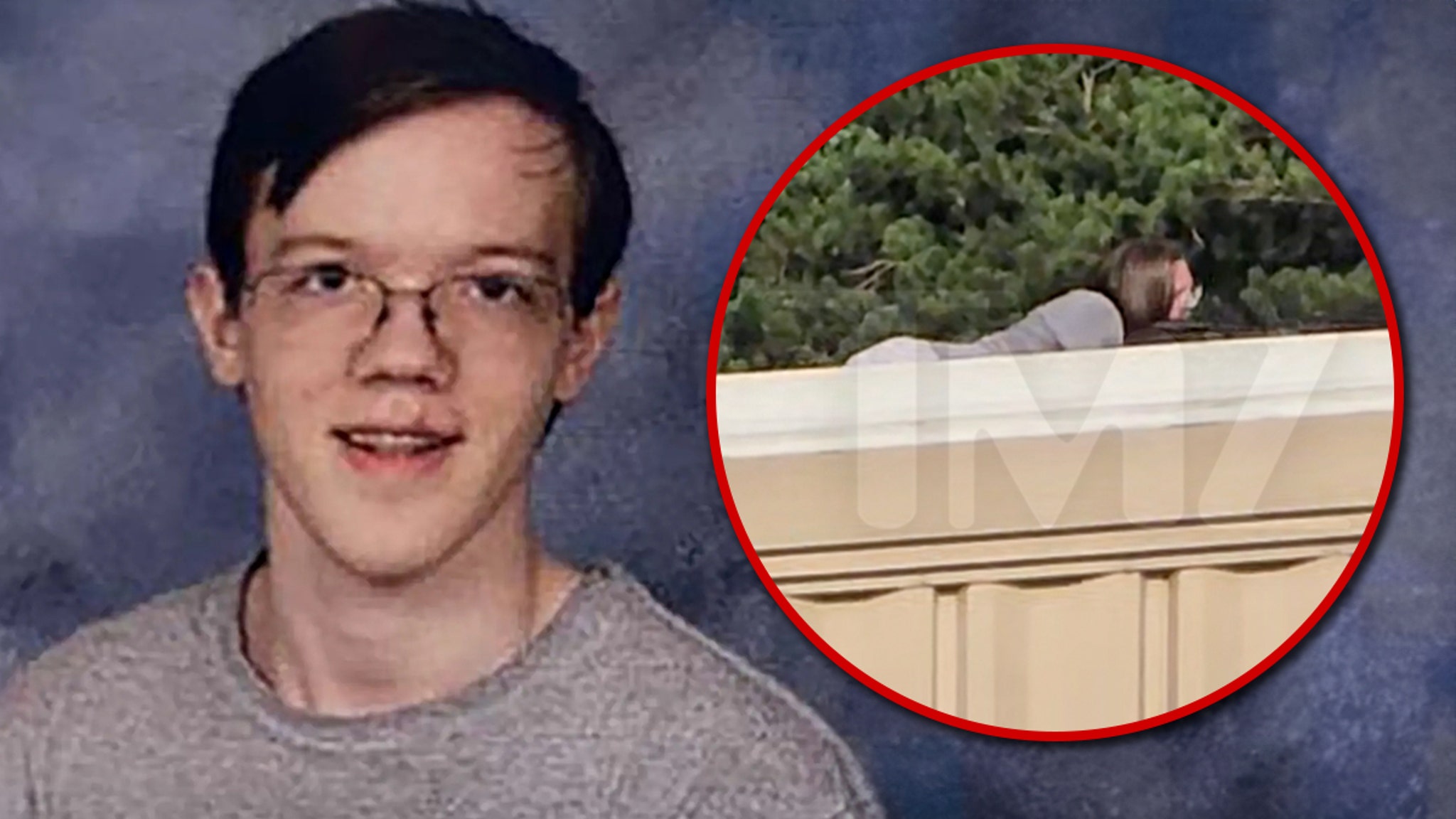Unpacking The Thomas Matthew Crooks Autopsy: What A Forensic Examination Reveals
Detail Author:
- Name : Jasmin Botsford
- Username : crooks.ericka
- Email : nick.deckow@gmail.com
- Birthdate : 1991-05-24
- Address : 590 Maude Bypass Port Larry, AK 22851
- Phone : 1-779-278-0890
- Company : Hackett, Leuschke and Franecki
- Job : Surgeon
- Bio : Adipisci aliquid aut est expedita maiores. Nemo iusto nihil placeat voluptatem tempora. Amet dicta ut tenetur expedita facilis nisi magnam possimus.
Socials
linkedin:
- url : https://linkedin.com/in/baby_real
- username : baby_real
- bio : Reprehenderit beatae esse vel fugiat.
- followers : 720
- following : 81
twitter:
- url : https://twitter.com/babywalter
- username : babywalter
- bio : Nisi sint et atque dolore. Et doloremque dolorem praesentium voluptates perferendis sed vitae. Ut assumenda distinctio at et amet incidunt.
- followers : 5605
- following : 2034
tiktok:
- url : https://tiktok.com/@baby_real
- username : baby_real
- bio : Autem in consequuntur ipsum illum quas temporibus.
- followers : 4815
- following : 2624
facebook:
- url : https://facebook.com/baby.walter
- username : baby.walter
- bio : Eum id hic nam omnis. Necessitatibus voluptas autem est consequatur.
- followers : 6283
- following : 342
instagram:
- url : https://instagram.com/baby_dev
- username : baby_dev
- bio : Tempora nam laudantium sit iste. Officiis illum quam distinctio.
- followers : 6219
- following : 110
When significant events occur, public interest often turns to the precise details that help us piece together what happened. In cases like the one involving Thomas Matthew Crooks, the forensic examination, particularly the autopsy, becomes a central point of focus. People naturally want to understand the circumstances, and this process is, you know, really crucial for finding those answers. It helps to clarify facts and often provides important insights that simply aren't available any other way, especially when things are very unclear at first.
Many folks are curious about what an autopsy truly involves, and that's completely fair. It's not just about confirming a passing; it’s a detailed scientific investigation. This kind of work, you know, sheds light on the actual cause and manner of someone’s passing, which can be pretty vital for legal processes, for public safety, and just for people to get a better sense of closure. It’s a thorough look, designed to give a complete picture.
Today, we're going to talk about the general principles behind a forensic autopsy, especially as they apply to situations that draw a lot of public attention, like the interest surrounding the Thomas Matthew Crooks autopsy. We’ll explore what these examinations are all about, why they matter so much, and what kind of information they can bring to light. It’s a process, you know, that often helps separate fact from speculation, providing a clearer path forward for everyone involved.
Table of Contents
- Understanding the Forensic Autopsy: A Vital Investigation
- What an Autopsy Seeks to Uncover: Key Information Points
- The Autopsy Process: Step by Step
- The Role of Toxicology and Other Tests
- Why Autopsies Matter in High-Profile Cases
- Public Interest and Information Sharing
- FAQs About Forensic Autopsies
- Looking Ahead: The Impact of Findings
Understanding the Forensic Autopsy: A Vital Investigation
A forensic autopsy is, you know, a very specialized medical procedure carried out by a forensic pathologist. Their main goal is to figure out the cause of passing, how it happened, and to collect any evidence that might be helpful in a legal setting. This is different from a clinical autopsy, which usually focuses on understanding a disease or medical condition. For cases like the Thomas Matthew Crooks autopsy, the forensic aspect is, actually, paramount, because it directly ties into legal and public safety concerns.
The forensic pathologist, you see, is a medical doctor with extra training in forensic pathology. They work closely with law enforcement and other investigators. Their findings are often a really important piece of the puzzle, helping to confirm or challenge initial theories about an incident. It's a bit like being a detective, but with medical tools and knowledge, trying to read the story the body tells.
This kind of examination is usually ordered by a medical examiner or a coroner, especially when a passing is unexpected, violent, or happens under unusual circumstances. It's a standard procedure to ensure that all bases are covered and that justice, you know, can be properly served. The process is thorough, designed to leave very little to chance.
What an Autopsy Seeks to Uncover: Key Information Points
An autopsy aims to answer several critical questions. These answers are, you know, pretty essential for understanding the full picture of a passing, especially in situations that garner a lot of public attention. Here's a brief look at what forensic pathologists typically try to figure out:
| Information Point | What It Means |
|---|---|
| Cause of Passing | The specific injury, disease, or combination of factors that led to passing (e.g., gunshot wound, heart attack). |
| Manner of Passing | The circumstances surrounding the passing, classified as natural, accidental, suicidal, homicidal, or undetermined. |
| Time of Passing | An estimate of when the passing occurred, based on various physical changes in the body. |
| Identifying Features | Confirming identity through dental records, fingerprints, or other unique characteristics. |
| Evidence Collection | Gathering trace evidence (fibers, DNA, residue) that might link to a crime scene or incident. |
| Contributing Factors | Any other conditions or circumstances that played a part, even if not the direct cause. |
For the Thomas Matthew Crooks autopsy, these points would, you know, really be at the heart of the investigation. Each piece of information helps to build a clearer narrative, providing facts that can be used in official reports and any subsequent proceedings. It's a detailed and careful process, always aiming for accuracy.
The Autopsy Process: Step by Step
The autopsy process is, you know, a very systematic procedure. It begins with a careful external examination of the body, documenting any injuries, marks, or distinguishing features. Photos are taken, and any clothing or personal items are collected as potential evidence. This initial step is, actually, quite important for getting a first impression of the circumstances.
Next, the internal examination begins. This involves opening the body cavities to inspect the internal organs. Each organ is, you know, carefully examined for signs of disease, injury, or other abnormalities. Samples of tissues and fluids are taken for further laboratory testing. This part of the process is very thorough, designed to reveal anything that might have contributed to the passing.
During this stage, the forensic pathologist is looking for anything out of the ordinary, anything that doesn't fit with a natural passing. They might, for example, be looking for signs of internal bleeding, specific types of trauma, or evidence of pre-existing conditions. It's a bit like a puzzle, where each piece of information helps to complete the overall picture.
The Role of Toxicology and Other Tests
Beyond the physical examination, toxicology is, you know, a very crucial part of many forensic autopsies. This involves testing blood, urine, and tissue samples for the presence of drugs, alcohol, poisons, or other chemical substances. These tests can reveal if any substances played a role in the passing, whether intentionally or accidentally. It's a pretty vital step, as chemical factors can sometimes be hidden.
Other specialized tests might also be performed, depending on the circumstances. These could include histology, which is the microscopic examination of tissue samples, or microbiology, which looks for infections. Sometimes, you know, even DNA analysis might be done if there's a need for identification or to link the person to a particular scene. These additional tests add even more layers of detail to the findings.
All these tests contribute to a comprehensive report, which is then submitted to the requesting authorities. The findings from the Thomas Matthew Crooks autopsy, for instance, would incorporate all these elements, providing a full scientific account. This complete picture is, you know, really what helps investigators and legal teams move forward with accurate information.
Why Autopsies Matter in High-Profile Cases
In cases that capture public attention, like the one involving Thomas Matthew Crooks, the autopsy findings take on even greater significance. They serve as an objective, scientific account that can help to clarify events and, you know, sometimes even dispel rumors or misinformation. When there's a lot of speculation, factual data from an autopsy can be a grounding force.
For law enforcement, the autopsy provides critical evidence that can guide their investigation. It helps them understand the sequence of events, identify potential suspects if applicable, and build a strong case. Without this detailed medical information, you know, their work would be much harder, relying more on circumstantial evidence or eyewitness accounts that might be less reliable.
From a public perspective, the autopsy report, or at least a summary of its findings, can provide a sense of closure and accountability. It helps people understand what happened, and why. While specific details are often kept private to protect the integrity of an investigation or the privacy of families, the general findings can be, you know, pretty important for public trust and transparency.
It’s also about preventing future incidents. Sometimes, autopsy findings can highlight systemic issues or dangers that need to be addressed. For example, if a passing reveals a flaw in a safety procedure, that information can lead to changes that protect others down the line. It's, you know, a way that even a tragic event can lead to positive improvements for society as a whole.
Public Interest and Information Sharing
When something significant happens, there's a natural desire for information. The public, you know, really wants to know what's going on, and how things are being handled. This is especially true when it involves events that feel close to home or impact broader societal concerns. The interest in the Thomas Matthew Crooks autopsy, for example, is a clear sign of this public desire for clarity.
However, sharing information from an autopsy is, you know, a delicate balance. On one hand, transparency can build trust and reduce speculation. On the other hand, there's a need to protect the privacy of individuals and families involved, and to ensure that releasing information doesn't compromise ongoing investigations. It's a pretty careful line to walk for authorities.
Official channels are usually the best source for updates. Law enforcement agencies or medical examiner offices will typically release information when it's appropriate and won't hinder their work. It's important for the public to, you know, really rely on these verified sources rather than rumors or unconfirmed reports, which can often be misleading.
Think about how different kinds of public information are handled. For instance, the official Thomas & Friends YouTube channel shares stories and adventures for kids, providing clear, family-friendly content. This is a very different kind of public information than, say, details from a legal case. Similarly, news about a bribery scandal, like the one involving Daniel Thomas in Petersburg, Virginia, which you can learn more about on our site, also involves careful information release, but for a different audience and purpose. And if you're interested in the lives of people like James Thomas, whose passing was announced by J M Wilkerson Funeral Establishment, Inc., you'd find details shared with respect for privacy, as seen on this page . Each situation has its own way of communicating with the public, and autopsy details are, you know, among the most sensitive.
The goal, ultimately, is to provide enough information to satisfy public interest without causing harm or interfering with justice. It's a process that involves careful consideration of many factors, always keeping the integrity of the investigation and the well-being of those affected in mind. That, you know, is a really important part of how these things are managed.
FAQs About Forensic Autopsies
How long does it take for autopsy results to be released?
The time it takes for autopsy results to be released can vary quite a bit, you know, depending on the complexity of the case. A preliminary report might be available within a few days, but the full, detailed report, especially if it includes toxicology or other specialized tests, can take several weeks, sometimes even months. It really depends on the lab's workload and the depth of analysis needed. So, patience is, actually, pretty important here.
Can an autopsy be refused by the family?
In many situations, if a passing is considered suspicious, unexpected, or falls under certain legal categories, a medical examiner or coroner has the authority to order an autopsy even without family consent. This is especially true if there's a public interest or a potential crime involved. However, if the passing is clearly from natural causes and there are no legal concerns, families can, you know, usually refuse a clinical autopsy. It's a matter of legal jurisdiction and the circumstances surrounding the passing.
What happens to the body after an autopsy?
After a forensic autopsy is completed, the body is, you know, carefully prepared for release to the family or funeral home. The body is respectfully restored, and any incisions are closed. The goal is to return the body in a condition suitable for funeral or burial arrangements, just as it would be after any other medical procedure. The process is handled with dignity and care, you know, really ensuring respect for the deceased.
Looking Ahead: The Impact of Findings
The findings from a forensic autopsy, like those expected from the Thomas Matthew Crooks autopsy, carry significant weight. They are more than just medical facts; they are, you know, pretty foundational pieces of information that can influence legal outcomes, inform public policy, and even shape public understanding of complex events. It’s a process that seeks truth through science, offering clarity in moments of uncertainty.
As we move forward, it’s important to remember the human element behind these investigations. While the scientific process is precise and objective, the outcomes touch lives deeply. The information gathered helps families find answers, assists legal systems in making fair decisions, and contributes to a broader understanding of public safety. This work, you know, truly plays a vital role in our society, helping us to learn and to heal, even after difficult events. For more general information about the work of forensic pathologists, you might find resources from a reputable forensic science organization very helpful, offering insights into their dedication and the detailed work they do.


